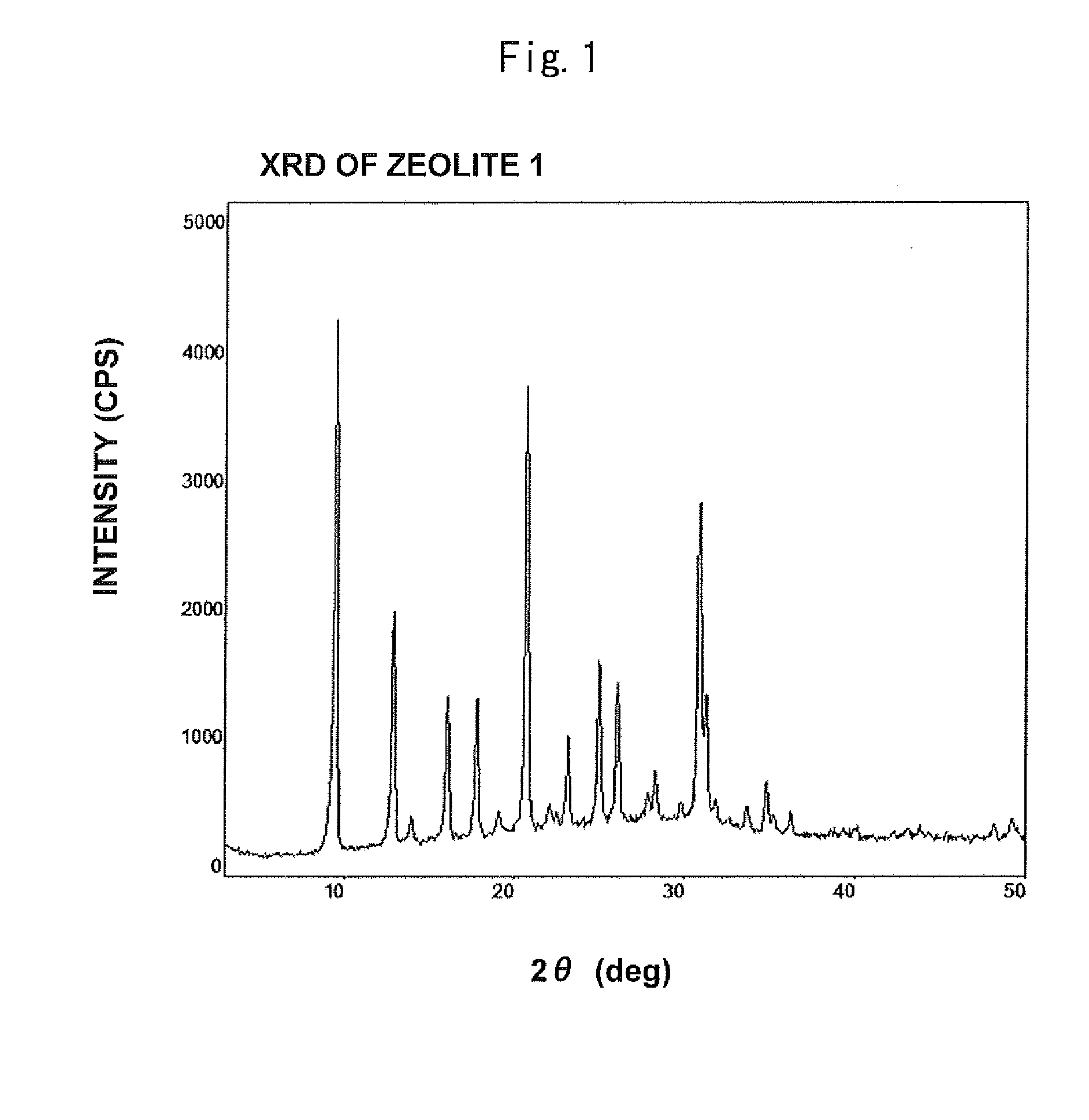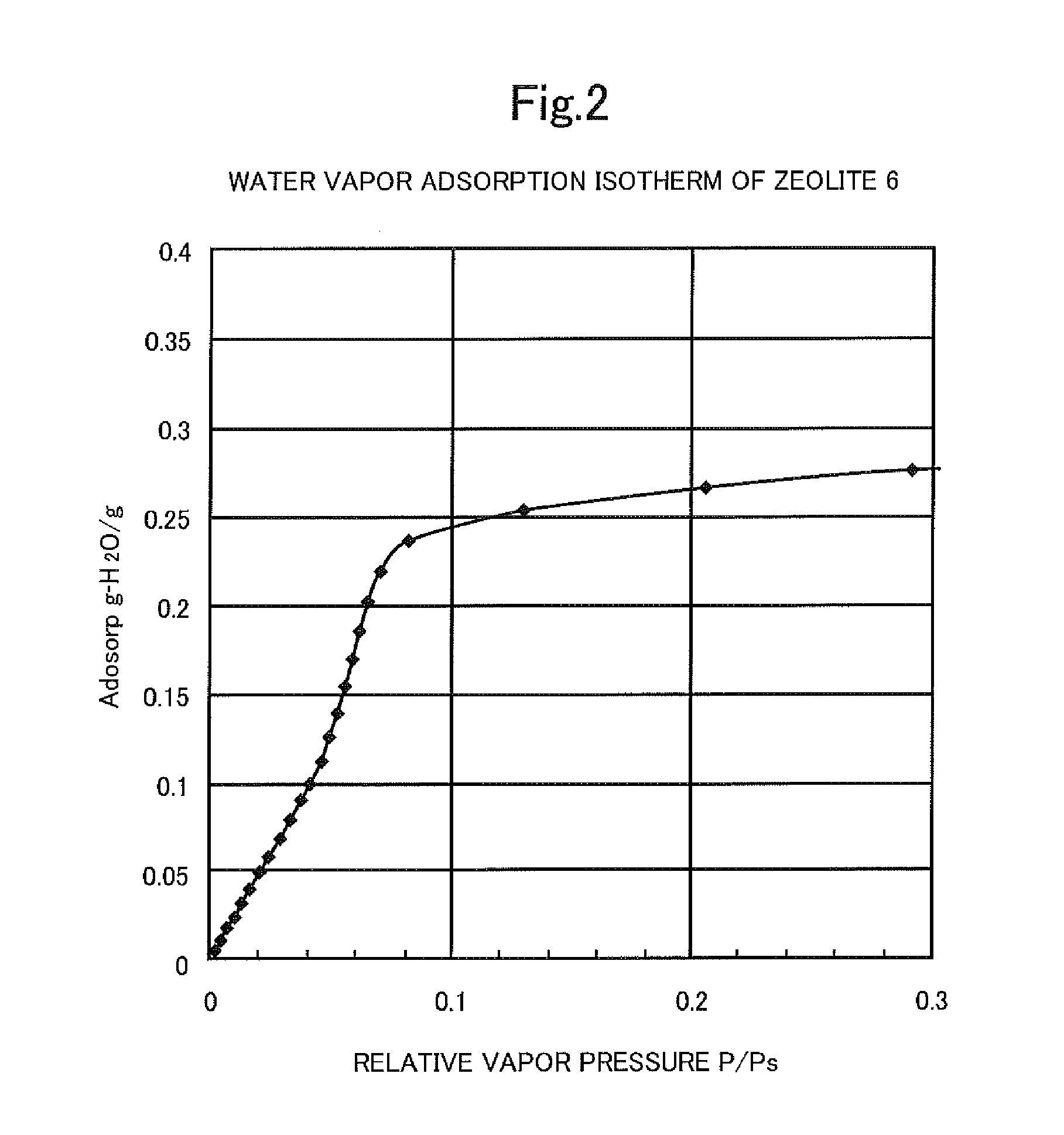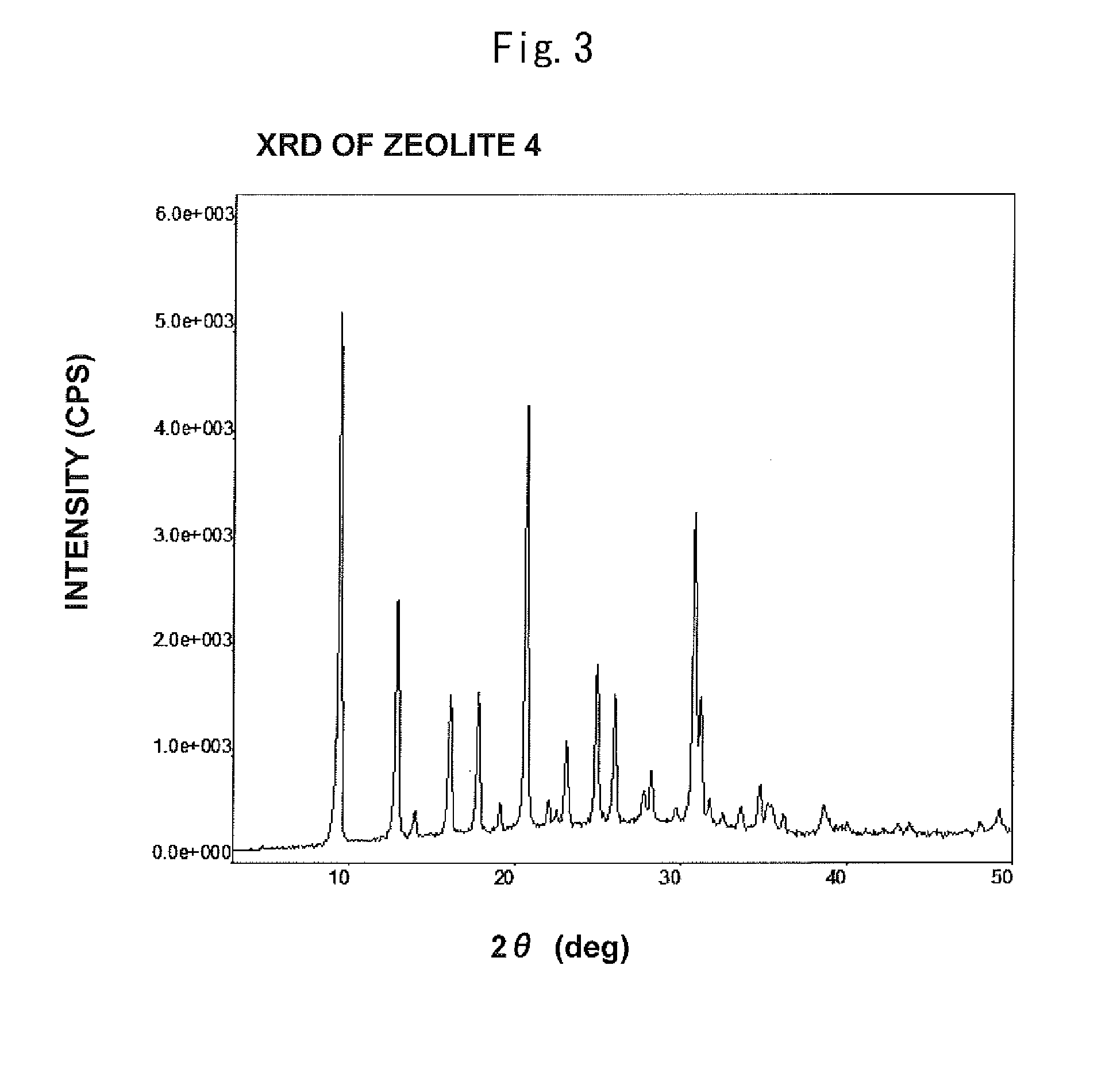Transition-metal-containing zeolite
a technology of transition metal and zeolite, which is applied in the field of transition metal-containing silicoaluminophosphate zeolite and exhaust gas treatment catalyst, can solve the problems of degradation of zeolite, poor performance of silicoaluminophosphate zeolite as a catalyst, and difficult uniform deposit of transition metal in the pores of zeolite, etc., to achieve easy and efficient production, excellent high-temperature hydrothermal durability, and high-
- Summary
- Abstract
- Description
- Claims
- Application Information
AI Technical Summary
Benefits of technology
Problems solved by technology
Method used
Image
Examples
example 1
[0276]8.1 g of 85% by weight phosphoric acid and 5.4 g of pseudo-boehmite (containing 25% by weight water, manufactured by Condea) were gradually added to 10 g of water and were stirred for one hour. 0.6 g of fumed silica (Aerosil 200, manufactured by Nippon Aerosil Co., Ltd.) and 10 g of water were added to the mixture and were stirred for one hour. 3.4 g of morpholine and 4.0 g of triethylamine were then gradually added to the mixture and were stirred for one hour. The mixture is hereinafter referred to as a liquid A.
[0277]In addition to the liquid A, a liquid B was prepared by dissolving 1.0 g of CuSO4.5H2O (manufactured by Kishida Chemical Co., Ltd.) in 13.4 g of water and adding 0.8 g of tetraethylenepentamine (manufactured by Kishida Chemical Co., Ltd.) to the solution.
[0278]The liquid B was gradually added to the liquid A. The mixture was stirred for one hour to yield an aqueous gel having the following composition.
[0279]SiO2: 0.25
[0280]Al2O3: 1
[0281]P2O5: 0.875
[0282]CuO: 0.1...
example 2
[0291]The liquid A was prepared in the same manner as in Example 1.
[0292]In addition to the liquid A, a liquid B was prepared by dissolving 1.0 g of CuSO4.5H2O (manufactured by Kishida Chemical Co., Ltd.) in 13.4 g of water and adding 0.6 g of triethylenetetramine (manufactured by Kishida Chemical Co., Ltd.) to the solution.
[0293]The liquid B was gradually added to the liquid A. The mixture was stirred for one hour to yield an aqueous gel having the following composition.
[0294]SiO2: 0.25
[0295]Al2O3: 1
[0296]P2O5: 0.875
[0297]CuO: 0.1
[0298]Triethylenetetramine: 1
[0299]Morpholine: 1
[0300]Triethylamine: 1
[0301]Water: 50
[0302]The aqueous gel was subjected to hydrothermal synthesis, separation of the product, drying, and calcinating in the same manner as in Example 1, thereby yielding a zeolite 2.
[0303]XRD measurement showed that the zeolite 2 had the CHA structure as is the case with the zeolite 1 according to Example 1. SEM measurement showed that the average particle size was 12 μm.
[030...
example 3
[0307]6.5 g of 85% by weight phosphoric acid and 5.4 g of pseudo-boehmite (containing 25% by weight water, manufactured by Condea) were gradually added to 10 g of water and were stirred for one hour. 1.4 g of fumed silica (Aerosil 200, manufactured by Nippon Aerosil Co., Ltd.) and 10 g of water were added to the mixture and were stirred for one hour. 3.4 g of morpholine and 4.0 g of triethylamine were then gradually added to the mixture and were stirred for one hour. The mixture is hereinafter referred to as a liquid A.
[0308]In addition to the liquid A, a liquid B was prepared by dissolving 1.0 g of CuSO4.5H2O (manufactured by Kishida Chemical Co., Ltd.) in 13.7 g of water and adding 0.6 g of triethylenetetramine (manufactured by Kishida Chemical Co., Ltd.) to the solution.
[0309]The liquid B was gradually added to the liquid A. The mixture was stirred for one hour to yield an aqueous gel having the following composition.
[0310]SiO2: 0.6
[0311]Al2O3: 1
[0312]P2O5: 0.7
[0313]CuO: 0.1
[0314...
PUM
| Property | Measurement | Unit |
|---|---|---|
| molar ratio | aaaaa | aaaaa |
| BET specific surface area | aaaaa | aaaaa |
| temperature | aaaaa | aaaaa |
Abstract
Description
Claims
Application Information
 Login to View More
Login to View More - R&D
- Intellectual Property
- Life Sciences
- Materials
- Tech Scout
- Unparalleled Data Quality
- Higher Quality Content
- 60% Fewer Hallucinations
Browse by: Latest US Patents, China's latest patents, Technical Efficacy Thesaurus, Application Domain, Technology Topic, Popular Technical Reports.
© 2025 PatSnap. All rights reserved.Legal|Privacy policy|Modern Slavery Act Transparency Statement|Sitemap|About US| Contact US: help@patsnap.com



